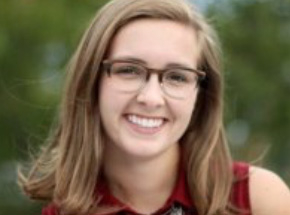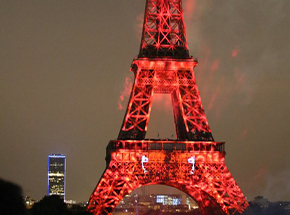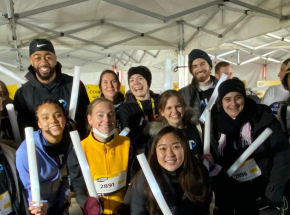- About AUP
- History of AUP
- Mission & Core Values
- Vision and Leadership
- AUP Recognition
- Alumni Success
- Campus Development
- Arts at AUP
- Policies & Guidelines
- Academics
- Undergraduate
- Graduate Programs
- MA in Diplomacy and International Law
- MA in Global Communications
- MSc in Human Rights and Data Science
- MA in International Affairs
- MA in International Affairs, Conflict Resolution, and Civil Society Development
- MSc in International Management
- MSc in Strategic Brand Management
- Find Your Thesis Advisor
- Previous Programs
- Cultural Program
- Faculty
- Summer School
- Research Centers
- The Center for Critical Democracy Studies
- Upcoming Events
- Research Projects
- Fellows’ Publications
- Publishing
- Curriculum
- Community
- Visiting Scholars
- CCDS Highlights
- Atelier de Théorie Politique – Paris
- Critical Theory 101: Future Directions and New Challenges
- Martti Koskenniemi on “The Law of International Society: A Road not Taken”
- Academic Freedom Symposium
- Tocqueville Colloque 2023
- Violent Turns Conference
- Degenerations of Democracy
- DEMOS21 Inaugural Event
- What Demos for the 21st Century?
- The Paris Centennial Conference
- Justice Stephen Breyer
- Civic Jazz - The Launch of the Center
- Past Events
- FR
- The Center for Writers and Translators
- The George and Irina Schaeffer Center for the Study of Genocide, Human Rights and Conflict Prevention
- The Joy and Edward Frieman Environmental Science Center
- The Center for Media, Communication & Global Change
- The Center for Critical Democracy Studies
- Departments
- Academic Resources
- Academic Affairs
- Academic Calendar
- Academic Resource Center
- Library
- Registrar's Office
- Teaching and Learning Center
- Employer Network
- Accessibility & Accommodation Services
- AI@AUP: A Campus-Level Initiative
- Quai D'Orsay Learning Commons
- Paris as Classroom
- ACE Center
- Admissions
- Student Life
- Campus
- Student Leadership & Involvement
- Paris
- Support Services
- Student Development Help Desk
- Student Accounting Services
- Student Immigration Services
- Student Grievance Procedure
- Diversity and Inclusion
- Health & Well-being
- Digital Student Handbook
- News
- Events
- AUP Giving
- Housing Offer for 2025-2026
- IT Services
- Alumni
- About AUP
- History of AUP
- Mission & Core Values
- Vision and Leadership
- AUP Recognition
- Alumni Success
- Campus Development
- Arts at AUP
- Policies & Guidelines
- Academics
- Undergraduate
- Graduate Programs
- MA in Diplomacy and International Law
- MA in Global Communications
- MSc in Human Rights and Data Science
- MA in International Affairs
- MA in International Affairs, Conflict Resolution, and Civil Society Development
- MSc in International Management
- MSc in Strategic Brand Management
- Find Your Thesis Advisor
- Previous Programs
- Cultural Program
- Faculty
- Summer School
- Research Centers
- The Center for Critical Democracy Studies
- Upcoming Events
- Research Projects
- Fellows’ Publications
- Publishing
- Curriculum
- Community
- Visiting Scholars
- CCDS Highlights
- Atelier de Théorie Politique – Paris
- Critical Theory 101: Future Directions and New Challenges
- Martti Koskenniemi on “The Law of International Society: A Road not Taken”
- Academic Freedom Symposium
- Tocqueville Colloque 2023
- Violent Turns Conference
- Degenerations of Democracy
- DEMOS21 Inaugural Event
- What Demos for the 21st Century?
- The Paris Centennial Conference
- Justice Stephen Breyer
- Civic Jazz - The Launch of the Center
- Past Events
- FR
- The Center for Writers and Translators
- The George and Irina Schaeffer Center for the Study of Genocide, Human Rights and Conflict Prevention
- The Joy and Edward Frieman Environmental Science Center
- The Center for Media, Communication & Global Change
- The Center for Critical Democracy Studies
- Departments
- Academic Resources
- Academic Affairs
- Academic Calendar
- Academic Resource Center
- Library
- Registrar's Office
- Teaching and Learning Center
- Employer Network
- Accessibility & Accommodation Services
- AI@AUP: A Campus-Level Initiative
- Quai D'Orsay Learning Commons
- Paris as Classroom
- ACE Center
- Admissions
- Student Life
- Campus
- Student Leadership & Involvement
- Paris
- Support Services
- Student Development Help Desk
- Student Accounting Services
- Student Immigration Services
- Student Grievance Procedure
- Diversity and Inclusion
- Health & Well-being
- Digital Student Handbook
- News
- Events
- AUP Giving
- Housing Offer for 2025-2026
- IT Services
- Alumni
Student Work
Lucia's Thesis
The Ephemeral Performance of Esther Ferrer
El Tren de John Cage, Bolonia (Italie) 1978 F. R. Masotti.
For Lucia Sendagorta, an art history and global communications double major, the choice of Capstone project was an opportunity to explore Western art from outside a French or American perspective. “I realized I didn’t know any contemporary Spanish or Hispanic artists,” she explained. “I wanted to explore this different field through my thesis.” Professor Hervé Vanel helped her frame the project in the context of bringing lesser-known artists into the foreground of Western art history.
After researching Spanish artist Esther Ferrer, Lucia decided to focus on Ferrer’s ephemeral performance, The Musical Thread, as the subject of her Capstone research. Ferrer’s work as a performance artist spans six decades; the show in question took place in 1978. Ferrer was part of a collective performance, which took place over three days on a train traveling several routes around the Italian cities of Bologna and Ravenna. The event was organized by the American composer John Cage and was called John Cage’s Train: In Search of Lost Silence.
Lucia’s thesis aimed to interrogate the role of the photograph in documenting a performance, which is by definition an ephemeral artform. “Professor Vanel gave me great advice,” says Lucia. “We had several technical conversations about the role of documentation in performance art.” There was little archival evidence of The Musical Thread, so instead Lucia went directly to the people involved in staging it. “It wasn’t easy, but everything came together,” she said. “Instead of finding documents, I was calling artists and museums. It was fun to be a detective!” Among others, Lucia spoke to a filmmaker who made a documentary about Cage’s train, which meant she was able to watch a re-enactment of the performance as documented in the film.
Lucia first reached out to Ferrer on International Women’s Day – March 8, 2020. “She told me she’d just got back from a protest!” says Lucia. “She was happy to see young people involved in the movement. It was great to talk to her about something humane.” Ferrer invited Lucia to meet in person, and, though Lucia says it was nerve-wracking to conduct the interview, the conversation formed the basis of her thesis. “The function of my work was to create reference material that wasn’t already there, rather than to add preconceived notions of interpretation,” she explains. The full transcript of their interview is published online and available here.
Lucia has been able to turn her thesis into other opportunities, gaining professional experience while helping Ferrer document the impact of her work. She is conducting a for-credit internship as Ferrer’s personal archivist, cataloguing Ferrer's work in a continuation of her thesis. She is working on digitizing Ferrer’s photography, so that future researchers can more easily access the same material. Lucia was trusted to use her knowledge of Ferrer’s work to ensure material was properly labeled. “She was wonderfully kind from the beginning,” she explains. “She just wanted me to feel comfortable in the storage room.”
Lucia is also helping Ferrer in preparing an acquisition dossier for one of her artworks, which was submitted to the Musée d’Art Moderne de Paris: “I’m creating a profile for her, building out the narrative around her performance.” Professor Vanel offered Lucia advice to help her understand the ways in which institutions select exhibition material. Lucia looked at past exhibitions that have used Ferrer’s work and explored the narrative that the museums were trying to build. “It was important to pitch the exhibition as complementing the museum’s other collections rather than competing with them,” she explains.
What began as Lucia taking the initiative to explore a lesser-known artist for her thesis grew into exciting opportunities for career development. Lucia’s experience is characteristic of the unique personal and professional pathways that students follow through their time at AUP and onward into international careers.
Related
-

Anna Schroeder ’15
Alumna
Read MoreAnna Schroeder ’15
Alumna
I wanted to study art history in a city that was overflowing with world-renowned museums.
-

Paris Through Photography
Featured Course
Read MoreParis Through Photography
Featured Course
Use the camera lens to decipher the city’s history.
-

Course des Lumières
Paris as Classroom
Read MoreCourse des Lumières
Paris as Classroom
Participants are provided with a light-up baton to carry throughout, symbolizing the movement’s aim of “lighting up the night against cancer.”

